VTC News quoted the opinion of Vice President of Vietnam Real Estate Association Doan Van Binh on this issue.
According to statistics, Vietnam has about 80 sea encroachment projects in 19 coastal provinces and cities, including large-scale projects that have been and are being implemented in localities such as Quang Ninh (Hung Thang tourist urban area of 224 hectares; Ha Long urban area of 248 hectares; ...); Hai Phong (Nam Dinh Vu industrial park of 1,329 hectares; Doi Rong international tourist area of 480 hectares ...); Da Nang (Da Phuoc urban area of 210 hectares ...).
Several projects to reclaim land for urban areas, industrial parks, and tourist areas have come into operation, promoting high efficiency, contributing to the socio-economic development of localities and the whole country.
However, attention and investment in sea encroachment are still limited, clearly shown in the absence of sea encroachment planning in land use planning of most coastal localities, and the lack of synchronization and consistency among relevant legal regulations on sea encroachment.
Currently, issues related to sea encroachment have not been fully and systematically regulated in legal documents. In other words, the legal framework for sea encroachment is not complete, not facilitating the implementation and management of sea encroachment activities.
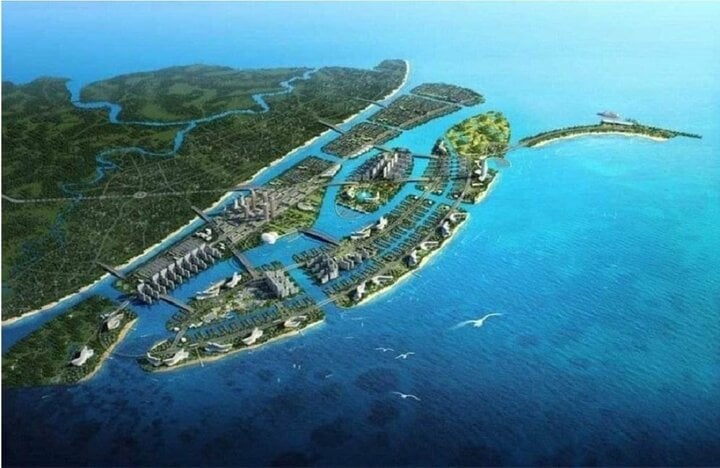
Experts say it is necessary to legalize sea encroachment activities in the process of perfecting institutions. (Illustration photo)
From research and experience of countries around the world, we propose some solutions to improve policies and laws on sea encroachment in the general spirit of building an open and consistent policy to encourage sea encroachment activities, ensuring a balance between management and construction in sea encroachment.
It is necessary to legalize sea encroachment activities in the process of perfecting the institutions, especially the revised Land Law and other related specialized laws. Ensure consistency and synchronization of regulations between the Land Law, the Law on the Sea of Vietnam, the Law on Resources, Environment of Sea and Islands on the management regime, land allocation mechanism, land lease, land use after sea encroachment, taking into account the investment capital for sea encroachment projects.
In fact, land reclamation projects require huge investment capital, and it is necessary to mobilize resources from the private sector for effective implementation. Therefore, it is necessary to complete the Draft Law on Land Amendment in the direction of supplementing regulations on land reclamation projects using capital sources other than public investment; land reclamation projects using mixed capital; land reclamation projects under the public-private partnership model... in order to create a legal framework to mobilize large resources for land reclamation activities, and at the same time have policies to encourage investment from the private sector in land reclamation projects.
In addition, special attention should be paid to the development of a sea encroachment plan. Based on the national land use plan for the 2021-2030 period, with a vision to 2050, provinces and centrally run cities are approving and promulgating provincial and municipal plans.
As of December 2023, 15/28 coastal provinces and cities have had their provincial plans announced. Up to 24 coastal provinces and cities do not have sea encroachment plans, including provinces and cities that have implemented large sea encroachment projects such as Quang Ninh, Hai Phong, and Da Nang.
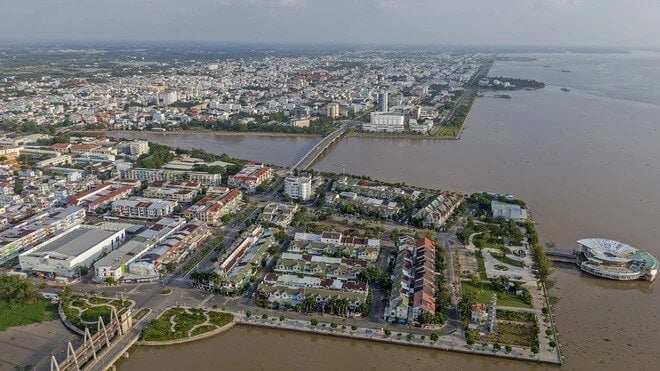
Coastal countries pay special attention to and encourage appropriate land reclamation to expand the area, serving economic and social development, security, national defense, natural disaster prevention and climate change. (Illustration photo)
It is necessary to immediately invest the best resources for comprehensive survey activities of all sea areas with potential for sea encroachment, including assessment of hydro-climatic conditions, coastal resources, environmental impacts, tides, ocean currents, water cleanliness, sedimentation, river and stream connectivity, infrastructure connectivity, heritages and buffer zones, people's livelihoods, excavation and embankment volumes, projected land use structure, water surface use, and estimation of the value of the marine economy...
Based on the survey results, it is necessary to develop a national sea encroachment plan, zoning, regionalization, and comprehensive exploitation of coastal space such as: green, smart urban areas applying artificial intelligence (AGI); transportation (airports, ports, roads, railways, maritime routes, etc.); green electricity production (solar, wind, tides, ocean currents); (iv) resource exploitation (oil and gas, etc.); resort tourism (hotels, entertainment areas, etc.); (vi) economic zones, high-tech zones, free trade zones, etc.; fisheries (aquaculture and fishing of seafood, seaweed, salt production, etc.)
Attention should be paid to providing guidance on methods and techniques for reclaiming land based on learning and updating advanced experiences from other countries.
Sea encroachment is not a new issue in our country, but there are still many limitations and shortcomings related to both policy, law and implementation.
Therefore, studying and learning from the realities of countries with strengths in sea reclamation to find suitable and effective solutions for Vietnam when perfecting related policies and institutions is a very meaningful task to help develop the invaluable "frontage" space, exploit sustainably, and optimize the efficiency of marine treasures to serve our economic, social, security, defense, and maritime development.
According to statistics from the World Economic Forum, since 2000 alone, the world's reclaimed land area has reached 2,500 square kilometers, equivalent to the area of Luxembourg. Land reclamation activities are currently especially common in East Asia, the Middle East and Southeast Asia.
Coastal countries pay special attention to and encourage appropriate land reclamation to expand their areas, serving economic, social, security, defense, disaster prevention and climate change development. Many countries have reclaimed land early in history, some countries have large land reclamation areas, helping to significantly increase the country's land area.
Land reclaimed from the sea in countries is often planned and used for the construction and development of large-scale technical infrastructure projects or key projects that contribute significantly to the socio-economic development of the country. For example, reclaiming land from the sea to build administrative-economic special zones, economic zones, free trade zones, industrial parks, seaports, airports, beaches, parks, religious buildings, etc.
In addition to expanding the area, sea encroachment also aims to control tidal water levels, prevent high tides, increase flood drainage capacity or use the sea surface as a space to store fresh water to supply people's lives and develop the coastal economy.
Doan Van Binh (Vice President of Vietnam Real Estate Association)
Source



![[Photo] President Luong Cuong attends the inauguration of the international container port in Hai Phong](https://vphoto.vietnam.vn/thumb/1200x675/vietnam/resource/IMAGE/2025/5/13/9544c01a03e241fdadb6f9708e1c0b65)

![[Photo] President Luong Cuong awarded the title "Heroic City" to Hai Phong city](https://vphoto.vietnam.vn/thumb/1200x675/vietnam/resource/IMAGE/2025/5/13/d1921aa358994c0f97435a490b3d5065)
![[Photo] Prime Minister Pham Minh Chinh receives Ambassador of the French Republic to Vietnam Olivier Brochet](https://vphoto.vietnam.vn/thumb/1200x675/vietnam/resource/IMAGE/2025/5/13/f5441496fa4a456abf47c8c747d2fe92)
![[Photo] Many people in Hanoi welcome Buddha's relics to Quan Su Pagoda](https://vphoto.vietnam.vn/thumb/1200x675/vietnam/resource/IMAGE/2025/5/13/3e93a7303e1d4d98b6a65e64be57e870)







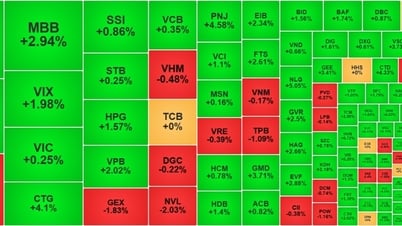
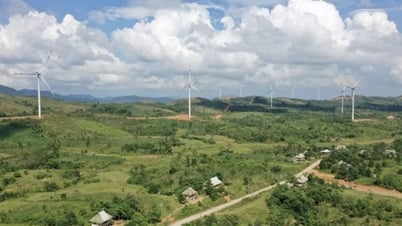


































































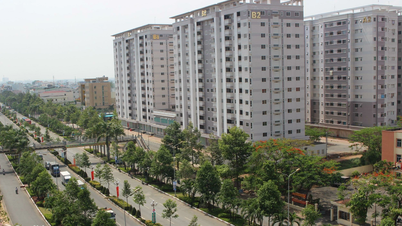












Comment (0)